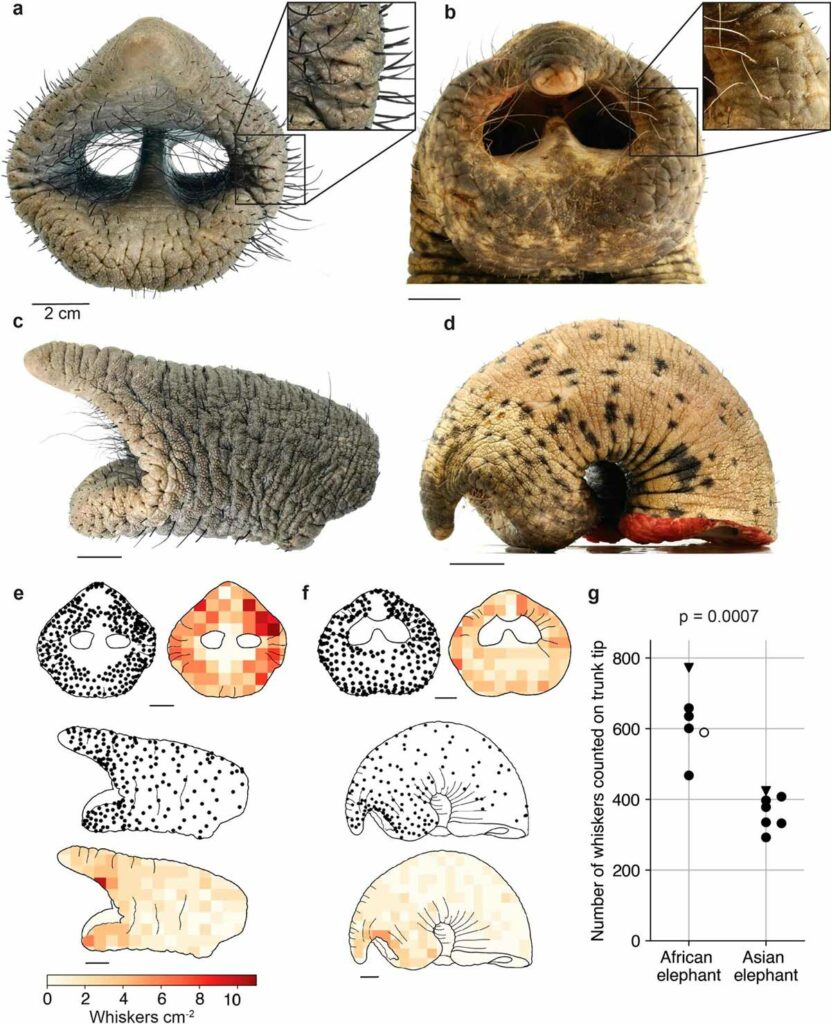Discover the fascinating truth behind the purpose of elephant whiskers as a team of zoologists unravels the enigma. Dive into the groundbreaking research revealing the hidden secrets of these unique appendages.
In a groundbreaking study conducted by a collaborative team of zoologists from the Bernstein Center for Computational Neuroscience Berlin, Humboldt-Universität zu Berlin, the Leibniz Institute for Zoo and Wildlife Research, and Berlin Zoological Garden, the mystery surrounding the purpose of whiskers on elephant trunks has finally been unraveled. Published in the esteemed journal Communications Biology, this research sheds light on the intriguing role played by these unique appendages.
Elephant trunks have long captivated scientists and enthusiasts alike, boasting an impressive array of functions. Comprised of approximately 150,000 muscle units, these trunks are both sensitive and robust. While they are primarily known for their ability to breathe, elephants also employ them for a multitude of tasks, such as grasping objects, siphoning water, and even providing respite from bothersome flies by showering their bodies.
In a lesser-known facet of their anatomy, elephants possess whiskers along the length of their trunks. Curiosity surrounding the purpose of these whiskers prompted the research team to embark on their pioneering investigation.
Shedding Light on Elephant Whiskers
To unlock the secret behind elephant whiskers, the scientists devised a two-pronged approach. Firstly, they meticulously recorded close-up videos of elephants in action, coaxing the gentle giants to insert their trunks through a hole in a box to retrieve tantalizing treats like carrots or apples. Through painstaking analysis of these videos, the researchers sought to discern the role played by the whiskers in the grabbing process.
Surprisingly, their observations revealed that elephant whiskers function differently from those of other mammals, such as rats. Unlike the twitching or reactive nature of whiskers in rats, the whiskers on elephant trunks remained stationary, displaying no discernible response to the environment.
A Closer Look at Elephant Trunks
The second phase of the study involved a meticulous dissection of deceased elephant trunks. By examining the anatomical characteristics of the whiskers, the scientists hoped to gain further insights. Their findings revealed that elephant whiskers were thicker and cylindrical compared to those found in other mammals. Moreover, they lacked the follicular nerves typically associated with sensory perception.
Based on these observations, the research team arrived at an intriguing conclusion. They surmised that the primary purpose of elephant whiskers is to assist in determining the appropriate amount of pressure to apply when gripping objects—a vital skill given the diverse range of items elephants frequently handle.
Implications and Future Research
This groundbreaking study not only sheds light on a long-standing enigma but also deepens our understanding of the remarkable adaptability of these majestic creatures. The insights gleaned from this research may have practical applications, particularly in fields such as robotics and biomimicry, where the manipulation of objects requires precision and finesse.
As the scientific community celebrates this milestone, future avenues of exploration beckon. The investigation into the intricate workings of elephant trunks and their sensory capabilities is far from over. Researchers now hope to delve deeper into the neural mechanisms that facilitate the remarkable dexterity of these impressive appendages.
By unraveling the mysteries of elephant whiskers, this pioneering study has added a crucial piece to the puzzle of elephant biology. With each discovery, we inch closer to comprehending the wondrous intricacies of the animal kingdom, unlocking the secrets that have fascinated and inspired generations.


